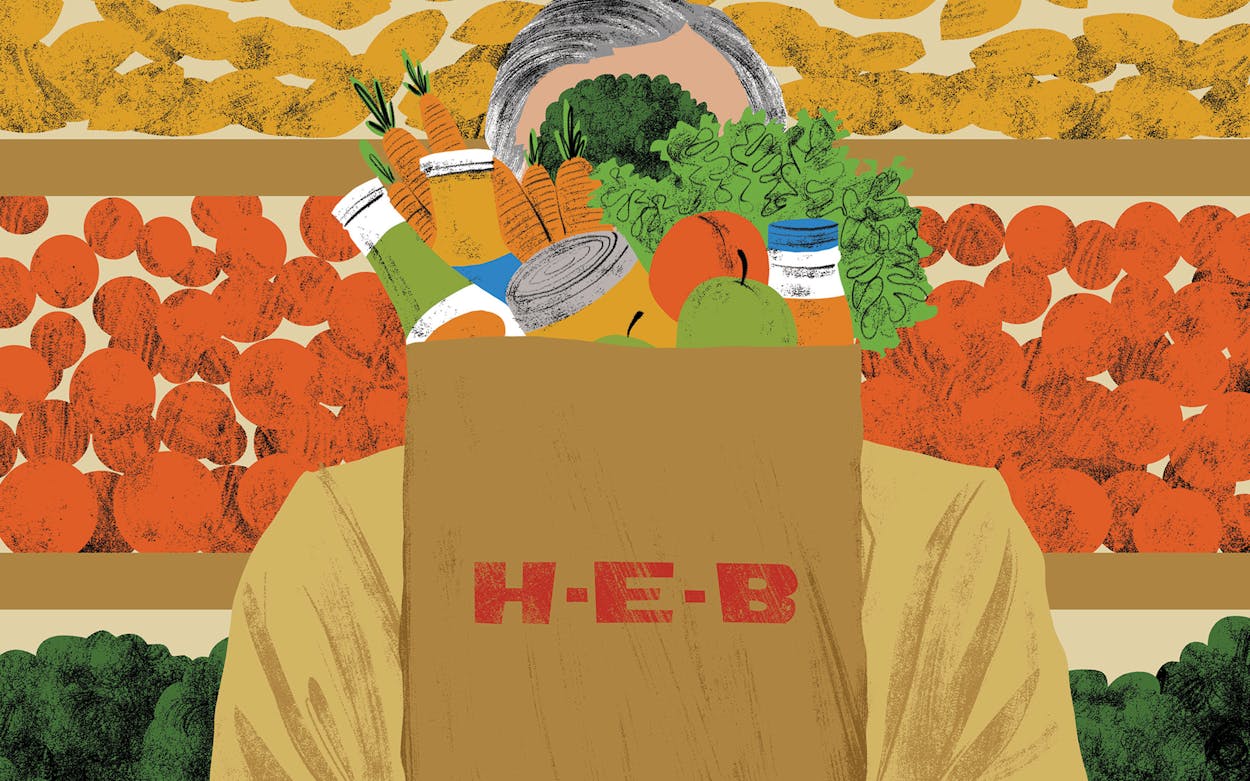In the late eighties Texas Monthly staffers met in Austin once a month, as we still do now, to kick around story ideas as a group. “There was a true camaraderie with the gang,” then–associate editor Jan Jarboe Russell recalls of her colleagues, an award-winning lineup of journalists, such as Paul Burka, Stephen Harrigan, Mimi Swartz, and Lawrence Wright, with editor in chief Gregory Curtis holding court. Each writer offered up a few pitches, and the group typically agreed on the best.
Russell would drive in for meetings from San Antonio, where she was living and working, and where the tension and fierce competition brewing between H-E-B and other local markets was obvious to all. One month, Russell brought forth the story of the “great grocery wars” in the magazine’s pitch meeting, and Curtis quickly deployed her to write it.
Charles Butt was less enthusiastic. Russell did lock down an interview with the notoriously private CEO, but he granted her only an hour of his time. It was still a coup: Russell remains one of the only Texas Monthly staffers to whom Butt has granted an interview.
The resulting story, “What Does H-E-B Stand For, Anyway?,” is a snapshot of a legacy at a crossroads. Butt wanted to turn his family’s impressive South Texas grocery chain into the leviathan institution we know today, but to do so he had to be shrewd, putting the company in conflict with its own slogan, “Totally Nice.” He started selling beer and wine. He slashed prices so low his competitors accused him of violating antitrust laws. He poached big-shot executives from national chains, losing some of his father’s longtime employees in the process. It worked. He kept Kroger and Albertsons from dominating him on his own home turf. None of the smaller local chains H-E-B was in competition with has survived to present day.
These days, a frequent question in our monthly story idea meetings is “Why now?” What makes a particular story urgent and relevant for our readers? But we also seek timelessness. We strive to make magazines that can be stacked on a bookshelf for years—even decades—and still offer insight about Texans’ lives. By 1988 H-E-B had grown from a single Kerrville market into the largest independent grocery chain in the country. Thirty-four years later, H-E-B is even more deeply woven into Texas’s identity, and Russell’s story remains a quintessential chapter of its ascent.
This article originally appeared in the June 2022 issue of Texas Monthly with the headline “What Does H-E-B Stand For, Anyway?” Subscribe today.









